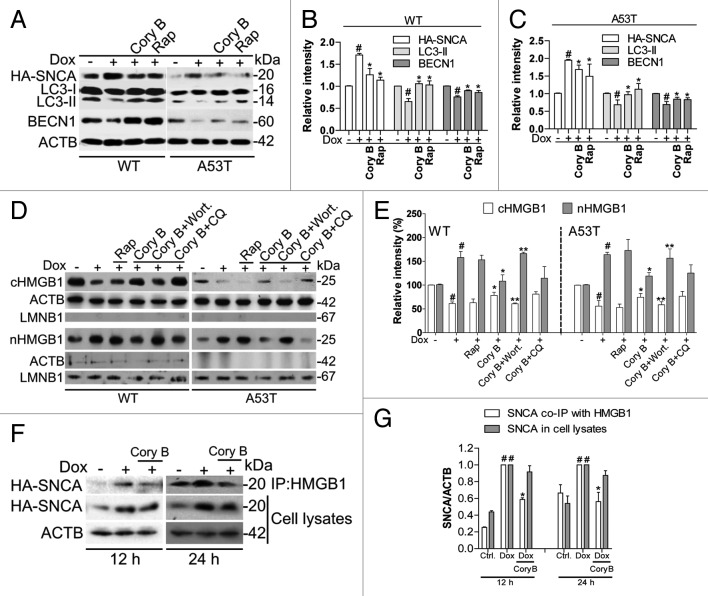Figure 6. Corynoxine B restores the deficient cytosolic translocation of HMGB1 and autophagy. iPC12 cells were treated with 2 μg/ml Dox for 24 h in the presence of corynoxine B (Cory B), rapamycin (Rap), wortmannin (WM) or chloroquine (CQ). (A) The expressions of induced HA-SNCA, endogenous LC3-II and BECN1 were determined by western blotting. (B and C) Data are presented as the mean ± SD from 3 independent experiments. # P < 0.05 vs. uninduced control; *P < 0.05 vs. Dox treatment. (D) The expression of HMGB1 in the cytosolic and nuclear fractions were determined by western blotting. ACTB and LMNB1 were used as relative loading controls. Experiments were performed 3 times with similar results and the representative blots were shown. (E) Data are presented as the mean ± SD from 3 independent experiments. # P < 0.05 vs. uninduced control; *P < 0.05 vs. Dox treatment; **P < 0.05 vs. Dox + Cory B treatment. (F) iPC12 cells (WT) were treated with Dox for 12 and 24 h in the presence or absence of Cory B. Induced HA-SNCA was coimmunoprecipitated with HMGB1. The levels of SNCA binding to HMGB1 and in whole cell lysates were analyzed by western blotting. (G) Relative levels of SNCA in Dox treatment group are set to 1 and all other values are calculated relative to it. Data are presented as the mean ± SD from 3 independent experiments. *P < 0.05 vs. Dox treatment.

An official website of the United States government
Here's how you know
Official websites use .gov
A
.gov website belongs to an official
government organization in the United States.
Secure .gov websites use HTTPS
A lock (
) or https:// means you've safely
connected to the .gov website. Share sensitive
information only on official, secure websites.
